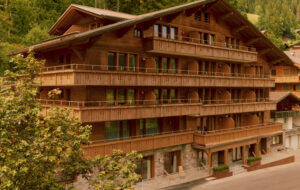

words Kieran Long
For many established architects, a zealous archivist unearthing a piece of writing from their naive youth is a scary thought.
But not for Peter Eisenman. The 74-year-old American has proudly revisited his 43-year-old Cambridge University PhD thesis, The Formal Basis of Modern Architecture.
This piece of writing, which was never published, has been issued in lavish facsimile by Swiss publishing house Lars Müller. The typewritten pages with footnotes take the very form in which the thesis was submitted in 1963. I don’t know whether it was the convention to type theses in large and small capitals, but the document is hard to read. It is beautiful, in a way, but the frequent spelling errors and monospace type soon lose their novelty value. More enjoyable are the line diagrams and drawings, beautiful freehand axonometrics by Eisenman of various buildings by the likes of Alvar Aalto, Le Corbusier and Frank Lloyd Wright, on whom he tested his theories.
Eisenman has regularly referred to this thesis in interviews and lectures, and it clearly forms part of the basis of his design work. For example, he writes in the introduction: “When we perceive a landscape, we notice its deformations … its harsh or gentle nature always relative to a horizontal absolute.” This brings to mind the field of skewed concrete blocks that is the Memorial to the Murdered Jews of Europe in Berlin (icon 025), which was completed in 2004.
Eisenman came to Britain in 1960 after a professor told him that he “should go to England and become more intelligent”. Soon after, the unknown 27 year old was shortlisted in a competition to find an architect to work on the development of Liverpool Cathedral. He became something of a celebrity, and was invited to teach and study at Cambridge University.
When I interviewed Eisenman in 2004, he claimed that Robert Venturi’s breakthrough 1966 work, Complexity and Contradiction, was prefigured by his own PhD thesis. I think there is something in this. TFBoMA certainly preempts the so-called birth of architectural theory, supposed to have begun in 1968 with figures such as Venturi and Aldo Rossi. Eisenman’s thesis is a separation of theory and history, and he says his aim is to elucidate a formal analysis of works of architecture, outside the perceptual, metaphorical or subjective realms.
The heart of the book’s argument is in the abstract second chapter, in which Eisenman explains his theories of form-making in relation to what he calls “generic form”. These are the Euclidean shapes, such as cubes and circles, which are the foundation, he says, of our visual perception of space. The opposite is “specific form”, which is the deformation of the generic by the requirements of a site or brief.
After that, the story is told through case studies of Aalto, Le Corbusier, Wright and Giuseppe Terragni, Eisenman’s favourite architect. This is done through text and dynamic diagrams, which aim to describe the forces at play on the buildings’ geometry. The exposition of Le Corbusier’s Pavillon Suisse is particularly perceptive, with Eisenman’s geometric method proposing interesting interpretations of the lodge house’s irrational grid of columns and rustic walls.
But as impressive as it is as an act of sustained critique, the book feels like a geometric parlour game. Unlike Venturi’s work, which has a pop dimension that makes it instantly accessible, it functions as a handbook for those seeking a way of proposing form in architecture.
It is a convincing demolition of the rhetoric of functionalism – but that has been done. Eisenman has recently made big claims for this document. But in 1982, during a debate with Christopher Alexander at Harvard University, he said: “My thesis was so primitive that I never thought of publishing it.” I am not sure what happened in the past 20 years to change his mind. The broader discourse of contemporary architecture is now far away from the concerns expounded here.
This edition is of most interest to obsessives and completists. A better bet for fans of Eisenman is Thames & Hudson’s Tracing Eisenman, in which you can see the results of these youthful ideas.
The Formal Basis of Modern Architecture, by Peter Eisenman, is published by Lars Müller, priced at €49.90
www.lars-mueller-publishers.com















